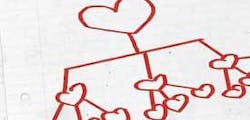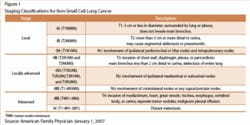Mentors pay it forward
Heroes and mentors start with a humble beginning - the decision to pay it forward
by Susan P. Burzynski, RDH, MSEd
An announcer on a local radio station commented on how youngsters today do not have role models to emulate. He said the role models from his youth were priests, football players, police officers, and firefighters. His comment made me think of the numerous role models I have in my professional career. Each mentor shared their expertise to enhance my professional and personal life.
His comment also made me wonder how many people look within their own families for role models. How many of us have a single parent who raised us while working one or two jobs so we would have food to eat, a roof over our heads, or our dental hygiene education? How many of us had parents who worked, yet found time to be a Little League coach, Girl Scout leader, or Cub Scout Leader? How many of us were raised by grandparents who dealt with more problems raising us than they did while they raised their own children, often wondering when their retirement was going to begin? They did not have to do it, but, out of love for us, they did.
Looking Out For My Sister
My sister, a nonsmoker, recently was diagnosed with poorly differentiated adenocarcionoma stage 3B lung cancer. When I learned my only sibling was ill, I could not get my hands on enough research! I wanted to learn everything there was about this horrid disease. What causes nonsmokers to develop cancer? What are the symptoms? How is it treated? Could it have been prevented? And the biggest question of all, “Is my sister going to die?” These questions prompted the research that I wanted to share here.
There are two types: small cell and non-small cell. Small cell lung cancer (SCLC) is very aggressive, is found primarily in smokers, and spreads quickly to other organs. Non-small cell lung cancer (NSCLC) is more common and accounts for 80 percent of the disease. Diana has adenocarcinoma, a subcategory of NSCLC.
Symptoms of the disease are a cough that does not go away, chest pain, shortness of breath, persistent hoarseness, swelling of the neck and face, significant weight loss not due to dieting or vigorous exercise, fatigue and loss of appetite, bloody or brown-colored spit or phlegm, unexplained fever, and recurrent lung infections, such as bronchitis or pneumonia.
As a child, Diana had pneumonia. Was this the “culprit?” While smoking is the primary cause of lung cancer, it is estimated 15,000 lung cancer deaths in the United States are among nonsmokers. This statistic was staggering!
As hygienists, we already know smoking is the primary cause of lung cancer, and we need to encourage our patients to quit. Secondhand smoke, also known as environmental tobacco smoke, contains over 4,000 different chemicals - 43 of which cause cancer! At least 26 percent of adults smoke, and 50 to 67 percent of their children are under 5 years old. Furthermore, nonsmoking spouses of smokers are at a 30 percent greater risk of developing lung cancer when compared to spouses of nonsmokers.
Cancer can originate from numerous other sources, including exposure to asbestos and toxic chemicals, environmental contamination, chronic lung inflammation and scarring, family history, and diet. The list is endless! One article stated that people who live in a heavily polluted metropolitan area are at substantial risk of acquiring lung cancer. Diet is about the only cause that seems to be the topic of debate. One study found low beta-carotene levels are associated with an increased risk of cancer, while two others said fruits and vegetables can reduce cancer risk.
But my search for information was really about the big question: “Is my sister going to die?”
The American Lung Association’s data predicts 163,510 Americans will die in 2006 from lung cancer. The determining factor seems to be the stage at which a patient is diagnosed. Staging for NSCLC is the TNM staging system (see Figure 1), also known as the American Joint Committee on Cancer system. From here, the stages are grouped into six stages. Diana is a Stage IIIB. The survival rates are higher for A groups vs. B group.
The Wind Beneath My Wings
I am hopeful she will beat the odds. Like many cancer patients, she must endure multiple chemotherapy treatments to rid her body of cancer. But how painful that must be! When I asked my sister how she does it, she answered, “Heck, I can do chemotherapy eight times.”
She does not know what the future holds, yet she forges ahead week after week. She does not cry. She does not ask for sympathy. How stoic!
Whether Diana realizes it or not, she is my hero. I can learn so much from her strength. She is definitely the “Wind Beneath My Wings” as in Bette Midler’s song.
The announcer’s comment also made me wonder how often we thank our mentors. They do not ask for it. But would you be where you are today without them as role models?
My professional career has been enhanced by the experience and expertise of my various mentors. I have received product suggestions that help both my sister and my own patients. While student teaching at an area school of dental hygiene, I was offered assistance in preparing my lesson on jurisprudence. I have been encouraged to join the American Academy of Dental Hygiene. Part of AADH’s mission statement is professional growth through leadership, mentorship, and fellowship. These professionals have taken the mission of AADH to heart by taking me under their wings.
Other mentors introduced me to loupes and to ergonomics. After working for 36 years without the benefit of loupes or an ergonomic chair, I now cannot imagine how I ever did it. I have been encouraged to be a better writer by writing from the heart. In the few articles I have written, I have kept this advice in the forefront of my mind. My mentors have taken roles as my proofreaders, keeping my past, present, and future tenses in the right order.
My sister has taught me to be strong and to be a fighter - no matter what the adversity.
To all of my role models, thank you for being part of my life and for showing me the ropes! I could not have done it without you!
Help Others Turn Their Lives Around
Frequently, people who become mentors have been mentored themselves. It reminds me of the book that was made into a movie, Pay It Forward. It is a story about eleven-year-old student, Trevor McKinney, whose social studies teacher directed the class to discover a way to change our world for the better and for that change to continue with others. Trevor develops a plan to “pay it forward” where each person does something for three people to turn their lives around. It was a great idea that took hold in many places in our country.
Look over your professional and personal life and become “Trevor.” How can you help others to turn their lives around? Do not be too busy to offer your expertise to a student hygienist. Join the ADHA and your local component; get involved! Do not sit back and wait for someone else to head a committee in your component. Encourage dental hygiene students to attend your component meetings.
Do not sit back and wait for someone else to head the Girl Scout or Boy Scout troop; do it! Be a Big Sister/Big Brother for someone who has no mentor. Honor your mentors by becoming one. Pay it forward!
About the Author
Susan P. Burzynski, RDH, MSEd, is the past president of the Buffalo Dental Hygienists’ Association and is a member of Amy’s List. She received her master’s degree from Canisius College in Buffalo, N.Y., in 2006. Susan has written various articles for RDH magazine and RDH e-Village. Currently, she is a clinical dental hygienist for Dr. James A. Hoddick in Tonawanda, N.Y. She may be reached at [email protected].
References
1. Cherath, L, McTavish, A, Frey, R, “Lung cancer, non-small cell,” 2005 Gale Encyclopedia of Cancer: A Guide to Cancer and Its Treatments, Available at: http://multisearch.buffalolib.org:5554/badLH16/url=http://galenet.galegroup.com/servlet/. Accessed February 26, 2007.
2. Thun, M., Henlely, S., Burns, D., Jemal, A., Shanks, T., Calle, E., “Lung Cancer Death Rates in Lifelong Nonsmokers” J National Cancer Institute, 2006; 98:691-699.
3. Albert Schweitzer quote from Lynn Radhaksdii, RDH on post of February 28, 2007, in AmysRDHlist.com.
4. American Lung Association, Lung Disease Data: 2006, http://www.lungusa.org Accessed on February 26, 2007.
5. American Academy of Otolaryngology -Head and Neck Surgery, Children and Secondhand Smoke page. Available at : http://www.entnet.org/healthinfo/tobacco/secondhand_smoke.cfm Accessed March 3, 2007
6. American Cancer Society, Detailed Guide: Lung Cancer-Non-small Cell: How is Non-Small Cell Lung Cancer Staged? Available at: http://www.cancer.org/docroot/CRI/contentCRI_2_4_3x_How_Is_Non-Small_Cell_Lung. Accessed February 18, 2007.
7. Collins, L., Haines, C.,Perkel, R., Enck R., “Lung Cancer: Diagnosis and Management,” American Family Physician, 2007;75:56-63.


